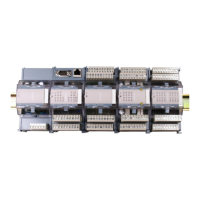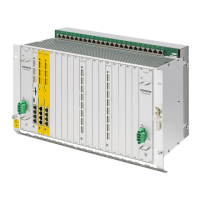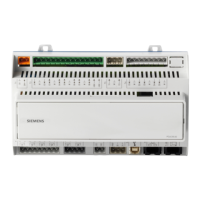Detailed description
2.11 Subroutine call through NC language replacement
Basic logic functions: Mode group, channel, program operation, reset response (K1)
180 Function Manual, 11/2006, 6FC5397-0BP10-2BA0
Example of T function replacement
MD22550 $MC_TOOL_CHANGE_MODE = 0 ;Tool change with T function
MD10719 $MN_T_NO_FCT_CYCLE_MODE = 0
MD10717 $MN_T_NO_FCT_CYCLE_NAME = "MY_T_CYCLE" ;T replacement cycle
N110 D1
N120 G90 G0 X100 Y100 Z50
; D1 is active
N130 D2 X110 Z0 T5
; D1 remains active, programmed D2 is provided
to the T replacement cycle as a variable
A comprehensive example for M/T function replacement including the associated
replacement subroutines can be found in the
Chapter "Examples of M/T function replacement during tool change".
2.11.3.2 M function replacement for tool change
Calling a tool change program with M function
The following machine data are used to configure M function replacement for calling the tool
change program:
• MD10715 $MN_M_NO_FCT_CYCLE
(M function to be replaced by a subroutine)
• MD10716 $MN_M_NO_FCT_CYCLE_NAME
(Name of the subroutine for M function)
• MD10718 $MN_M_NO_FCT_CYCLE_PAR
(M function replacement with parameters)
The information required for the tool offset or tool offset selection is passed to the subroutine
via a system variable.
Programming the M function replacement with parameter transfer
The address extension and function value of the M function must be explicitly, i.e.,
constantly, programmed for M function replacements with parameter transfer. An indirection
definition via variables is not allowed.
Permissible programming Permissible programming
M< function value >
M = < function value > M = <variable1>
M[<address extension>] = <function value> M[<variable2>] = <variable1>

